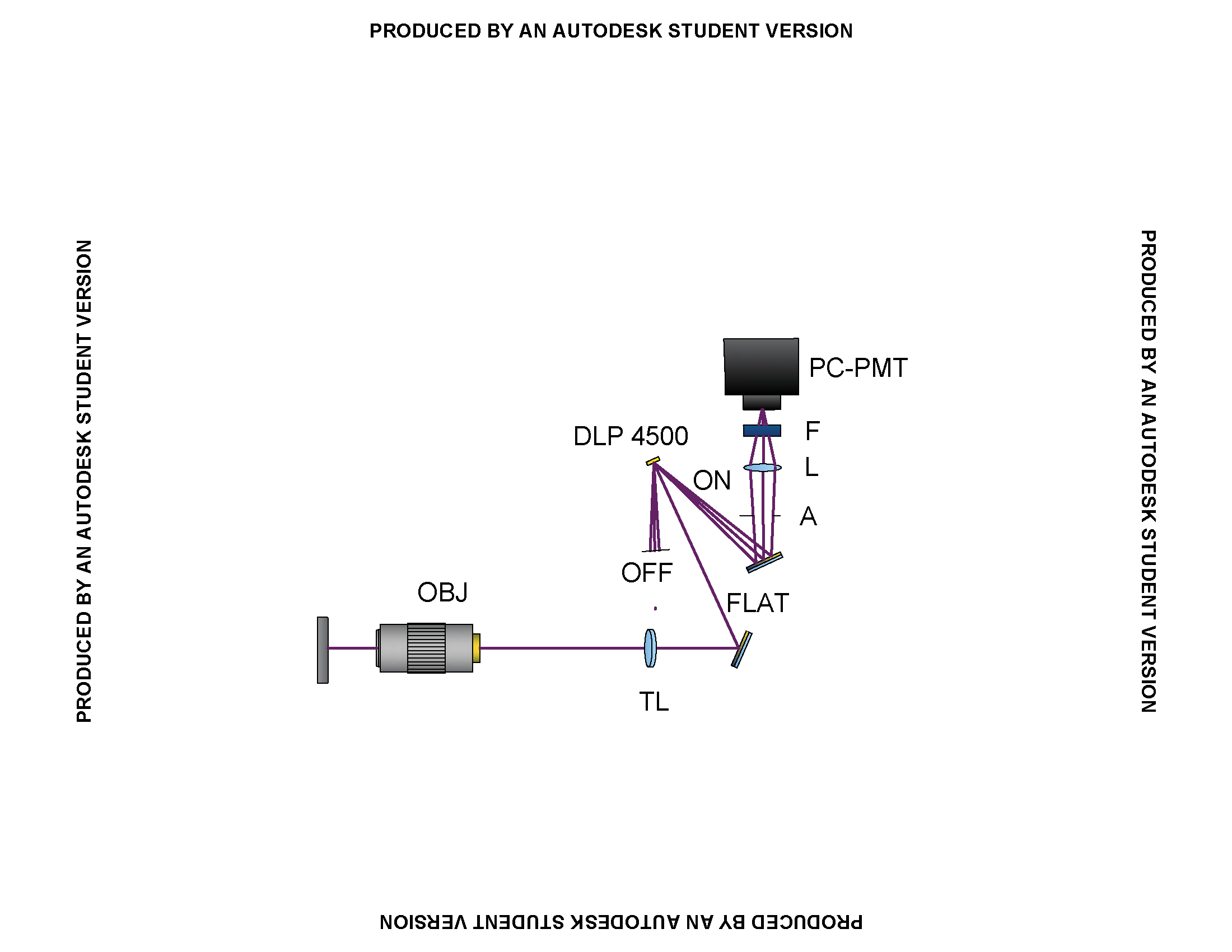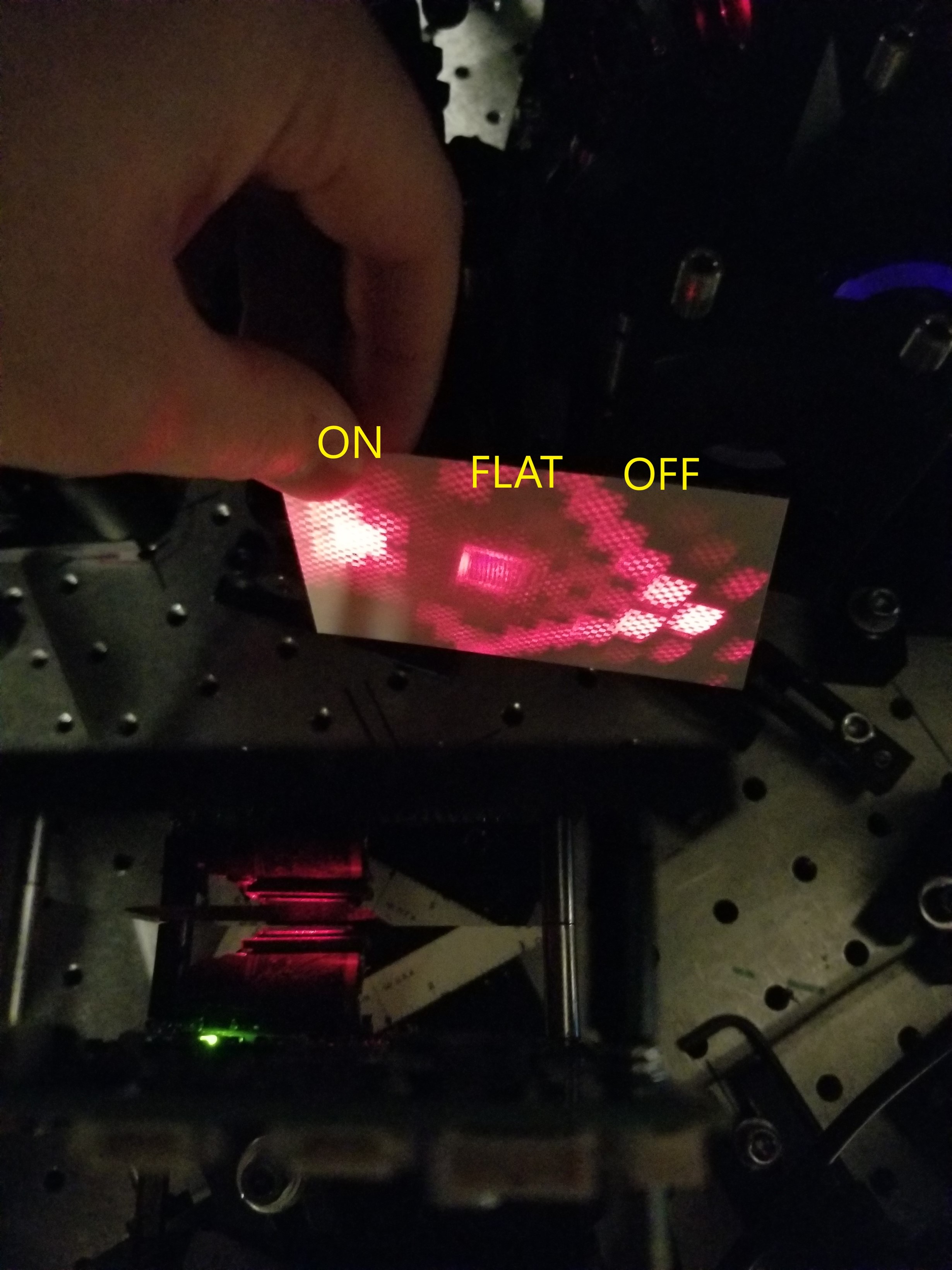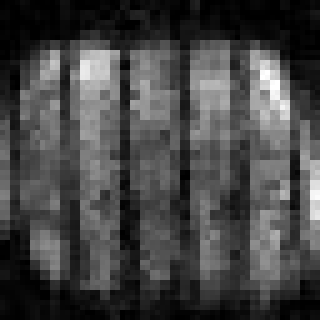Hi,
I have an optical issue with the DLP4500 that I can't seem to solve on my own. The problem is that in my microscope I have a significant amount of flat state that appears on top of my image. I have some custom DAQ software that I wrote, it uses the DLP4500EVM GUI in video mode and the DLP4500 as a second screen. I've posted some details below that could help. Figure 2. shows the typical underfilled images I've been obtaining. Comparing this to Figure 3. it's clear that the FLAT and ON states are mixing somehow, the lines of the FLAT state show up in my image collected at the ON state. My ON:OFF ratio is ~1000:1.
Figure 1. Simple microscope schematic. Sample is illuminated from below by a 5 mW 405 nm laser diode and the image is projected onto the DLP4500 at normal incidence. The OFF state is blocked and the ON state is sent through an aperture (<6 degree cone) and collected in a photon counting photomultiplier tube. Image is to scale.
Figure 2. Image of ON state. Object is a flat structureless piece of titanium
Figure 3. Appearance of ON, FLAT, and OFF states at 24 degree incident angle using 5mW HeNe laser. Default checkerboard pattern displayed.






